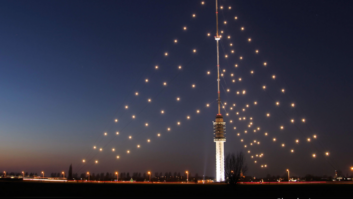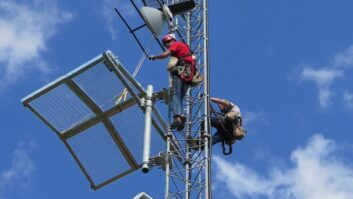In this letter to the editor, the author comments on Randy Stines’ recent article “Stay on the Good Side of the FCC.” Comment on this or any article. Email radioworld@futurenet.com.
I would like to expand on Randy Stine’s article from Jan. 3, titled “Stay on the Good Side of the FCC.”
I am the ABIP inspector for Kentucky and Indiana. The question I ask that gets the most blank stares is “what happens when your tower lights stop blinking?” Some people have a good answer, that is, the lights are tied into the remote control and will call out an alarm.
However, there are other people who do not have a valid answer to the question and have a huge liability on their hands just waiting for the moment.
The FCC defers to the FAA when it comes to marking structures that may pose a hazard to air navigation. The FAA stipulates that “any failure or malfunction that lasts more than 30 minutes and affects a top light or flashing obstruction light, regardless of position, should be reported immediately by calling 877-487-6867.”
One answer I get is: “We check and log the condition of the lights once a day.” My follow up to that is: “Fifteen minutes after your check, the top beacon goes out. How do you know?”
Another answer to the question is: “My remote control will text/email on any alarms.” However, I have learned from experience with my own tower that a 3 a.m. text or email will not wake me up.
The bottom line is, you need a monitor system that will alert you to a failure within the 30-minute window that the FAA gives us to notify them. If your remote control does not have a call out feature, there are several auto-dialers on the market that will place a phone call when an alarm in the form of a dry contact closure is presented. I can recommend the one I use if you need it.
You still need to check your lights on a quarterly basis and log it. Quarterly on-site inspections of the lighting system will ensure proper operations of the alarm reporting system. Keep the logs for the required two years. Do not depend on the alarm system to alert you to failures without checking its proper operation on a regular basis. If your tower light system is based on LEDs, there should be an alarm output for the infrared LED side as well.
If all this sounds a little complicated, and it can be, there are companies out there now who offer tower lighting as a service. They install a new LED lighting system, maintain and monitor it, all for a monthly or tower annual fee. If you own multiple towers across many states, this may be a viable option.
Malfunctioning tower lights are a major liability to the small station owner. Proper attention and oversite will prevent a tragedy from occurring.
— Scott Cason, ABIP inspector, director of engineering, Kentucky Broadcasters Association
[Related: “Are You Ready for Tower Lighting as a Service?“]






